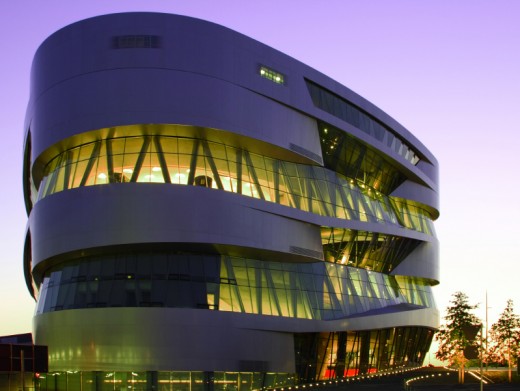Building Green: How Green Tech is Revolutionizing Architecture

Green building embraces the holistic approach of sustainability to conserve and integrates the associated goals in architectural designs and structures.
Sustainability is often thought of in terms of impact on environment or ecology alone, but this is not the case. Its goals are broad and entail long term costs that concern human health, economic welfare, and a host of efficiency issues.
So a green building—a structure—is one that has been designed conscientious of human quality of life over the life cycle of that building. Yet the stark environmental features of a green structure have everything to do with better living.
Why is Sustainability 'Green'?
Have you ever wondered why sustainability is characterized as green? Why is it about earth and environment and energy? It is not a coincidence that nature and environmentally-thoughtful invention is used to train our habits to be sustainable. In nature there is no waste—true—because all expended product is reused in natural processes. This is known as a closed loop with ecosystems relying on no exchange of matter from outside the system.
Further, the word sustainability derives from an old German forestry term for "sustained yield." Thus green is implicit to the cause and was originally understood in the German forest as a balance between consumption and reproduction as early as the the 12th century.
So nature is a perfect model for humans to reduce their impact on the environment and those other “long term” ways that form the essence of sustainability today.
Green Building Stat:
Taipei 101, the tallest building in the world when built in 2004, is currently the largest and tallest green building with LEED Platinum certification (since 2011). After a three-year retrofit to save on water and electricity, the building's annual utility has been reduced by $700,000!
Green Building Essentials
In addition to traditional concepts in architecture, environmental implications lend to the concept of green building. These implications are:
- the reduction of energy in use
- the reduction of pollution and environmental damage
- the reduction of resource depletion and embodied energy required to produce materials
- the reduction of internal pollution and health damage.
Thus green architecture leads to high-quality buildings that last longer and cost significantly less to operate and maintain—an important thing as it is estimated that buildings are responsible for more than 40 percent of the world’s energy consumption and one-quarter of CO2 emissions.
Green Roofs 101
Which green technology do you most desire?
All About Solar Shingles
Links on Green Building
- GreenSource
GreenSource covers sustainable design, green building, LEED projects, green & sustainable products, and case studies. - U.S. Green Building Council
A non-profit organization dedicated to sustainable building design and construction and developer of the LEED building rating system. - Worlds Greenest Homes
Playlist of the most stunning eco-dwellings on the planet!
Building with Green Tech
Green tech is indeed revolutionizing architecture and building design and in ways that no one could have imagined 50 years ago. Like other technology, it is constantly changing and upgrading. Presented below are just ten products selected among hundreds that are advancing the cause of green building.
Green Roofs. Vegetative roofs help in many ways, but they most importantly provide good insulation for buildings and reduce urban air temperatures. These roofs can be extensive (supporting light layers of vegetation) or intensive (supporting various types of plants). Moreover, they are beautiful—and who wouldn’t want to be the envy of the neighbors with such an addition?
Wireless Monitoring and Management Systems. Energy management systems today are high-tech and replete with wireless thermostats, smart utility meters, and occupancy sensors. They function in real-time and gather data using sensors or by communicating with devices. Most can be monitored from any spot on the planet and will use email and mobile phone functions for notification.
Integrated Photovoltaic, Solar Thermal, and Rain Harvesting Systems. Normally, solar paneling, solar thermal systems, and rain harvesting systems are used independently; but today some manufacturers are starting to integrate them into single systems. These systems use photovoltaics (solar panels) to heat rain-harvested water—a perfect example of clean energy aptitude.
Natural and Recycled Paints. Natural paints can be made from clay, cellulose and other plant material, and even marble. They are free of harmful chemicals and volatile organic chemicals (VOCs) making them safe to breathe. Recycled paints—yes, latex paint is recyclable—follow the zero waste ideology by being kept out of the environment.
Daylight Management Systems. Light management technology is often used in commercial buildings to create ideal comfort and productivity. Centrally automated functions for switches, dimmers, and shades use smart systems that detect daytime light conditions and adjust accordingly. The systems even generate reports on light usage and product interactions.
Water Recycle Systems. These systems are able to collect water from laundry, sinks, baths, and showers; filter it; and create water suitable for outdoor irrigation, which it performs automatically. Though equipped with pumps for irrigation, systems can also be configured for gravity flow. The filters are good for 15,000 gallons of water.
Natural Linoleum Flooring. Green building prefers smooth flooring as opposed to carpet since carpeting easily traps dusts and other particulates that cause allergies to flare. Natural linoleum is one such material produced from natural, renewable raw materials: linseed oil, pine rosin, sawdust, cork dust, limestone, and natural pigments.
Building Integrated Photovoltaics. These are solar panel roof shingles!
Bird-Safe Window Glazing. Sustainability has gone to the birds! German company Arnold Glas has produced a specialty glazing that contains random patterns of UV-reflective lines visible to birds and nearly invisible to humans. Such invention will help to reduce the 100 million bird deaths caused each year by collisions with buildings.
White Cedar Shingles. White cedar contains natural preservatives against insects, rot, and weather damage. It is extremely durable and does not shrink or warp. It weathers in beautiful silver and gray shades when left untreated; and used as a siding, or shingles, the wood can last for 50 years.
There is so much green building technology on the market today. It is worth visiting a local hardware store or perusing an online website just to see where the future is headed. It is truly fascinating.



